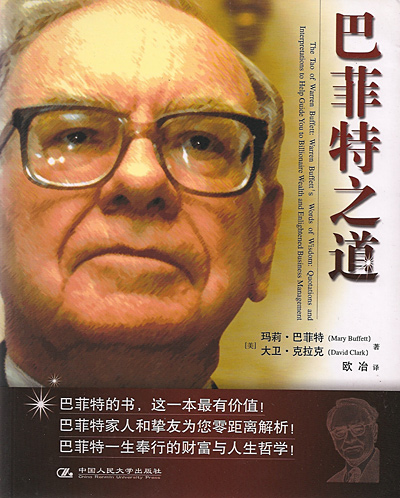Title - After the Music Stopped
Author - Alan S. Blinder
Published by - Penguin
Year - 2013
Review - Sampson Onwuka
'The financial crisis, the response, and the work ahead….'
The theme motivation for financial crisis at the very junior level is perhaps the summary of the book by Alan Blinder. The best-selling author presented a step by step unraveling of the problems of 2008 and why it happened. It is important that a case study of this nature should incorporate some of the basic innovation in earlier books on 2008. It is important that the territorial integrity of the author is defended concerning the left and right of the crisis, beginning with a short dribble into the failing necessity to reprove the lending practice. Whereas the author may have given to several informed sources on the lingering problems of debt service and repay rate, we wonder why no few Americans mentioned Alan Blinder to the corridors of the prophets of financial unbound. At least some of us indicated that such was the case anymore than the situation warranted, but the sharp thrust between a misnomer and organ of the Reserve is within the dust on the investigative reporting. At least in crisis - there are always causes and effects, especially the reasons for the crisis, but in his book, there are several trying reasons for the period and why the lessons serve several purposes and one. For a professor attached to Princeton University and a doctored advertorial for financial capacity - especially in Risk management, there are possibilities of assuming a just leniency to his lithe academic.
Nothing is far from the gospel of repentance and as such the professor may sound off the lessons of 2008 but these were obvious lessons and the storied consequences drawn from other sources is not better than expected. The lessons endures, the lessons which the book offers survive for ordinary reasons, to a point that we appreciate his book only from a distance with lit glow light of thoroughly searching example - yet lacking in originality.
Let us quickly mention that the seven distinctive concerns and motive for lessons from 2008 raised and discussed by the author include (1) inflated asset prices (2) excess leverage (3) lax financial regulation (4) disgraceful banking practices (5) the crazy quilt of bad regulation (6) the abysmal performance of the statistical rating agencies (7) a problem of permanent money. His general and main concern is (1) subprime mortgage (2) Alt – A mortgage ---origination of loans and how it translated itself to the general public and how well the government was prepared to handle these issues.
It is interesting that the author – Alan Blinder - a one time member of Federal Reserve and accomplished duct tape for reforms at the Federal Reserve may point out some of the benefits of writing about the latest crisis years after the incident. His point is well taken but edited materials from the 2008 incident may serve as a torch stone of examples for providence but in these years, these stories from 2008 and a book of such magnitude may or may not likely persuade the public but it narrows the conflicting dissent over the role of Government in terms like this. The book is testament to the power of narrative as if the author is writing for providence and try for the sake of history to keep the account straight. The title is another matter, 'After the Music Stopped' is far more stile than the non-musical macarana that would have followed a different title; 'The Music Ended' or perhaps ‘And The Music Ended’.
There are practical intellectual lessons resulting from doctrine linear perception of 2006, 2008, - no different from some of other trying moments of the Federal Reserve and U.S economy - but in 'After the Music Stopped' the problems of 2008 offers its own solution. Yet far from the maddening crowd are examples resilience in the industry which are no mirage but seem so from years that distance us every day from the main events of 2008. How distant the years is how certain actions of the State and those of the banks and the general public were a moral hazard and constipation that needed surgical procedure and not the experiment that nearly trapped Bernanke’s administration. There are issues of Prime Mortgages (a) FHA/VA mortgages and Residential mortgage-backed securities ($1.2 trillion in 2006), and the additional weight of the Office of Federal Housing Enterprises Oversight (OFHEO) which the author raised, and if this is the case, the resolve is generally infectious. How infectious is a matter of the Oversight Committee and who is reading Alan S. Blinder.
Appraised from a different landscape, the lessons serve no small purpose and may be practically outside the grasp of regular people. I guess this is where the issue get muddy and the professor gets a red eye. How does the pertinent lessons of 2008 reach the consumer that need it more. For sure, the financial language of 'After the Music Stopped' is a proper class and may serve in itself a strategic turn off for regular folks. In future the author can remember that Americans are very educated but majority of their financial literature in real time is struggling and suffer in interest. This is perhaps not enough reason to propose that the author was writing with a mirror reflecting the prejudiced concern of the public concerning the $1.2 trillion spent by the government and why, or that he skewed over it. The book however renders itself disabled by the enigma that welcomes risk as inevitable and human and therefore expected. Yet if we suggest to the rest of us that a 22% increase in house acquired over a period as the author mentioned, is worth the trial by market or sustainable, we may or may not resist the greater temptation of doubting the munificence of buying, selling, and carrying on of the deal at the Federal Reserve and Wall Street without thresholds and warning signs. And if this is common sense invocation to complex matter, the Federal Reserve is not without blames.
There are deals the government made with General Motor and with Chrysler and there was TARP for multi-billion dollar bridge within the accessibility of (1) National Economic Council - (NEC) (2) Council of Economic Advisers (CEA), etc., and they were involved in handling the financial resources available. The author also mentioned that “The markets involved included those for mortgage backed securities (MBS), other asset-backed securities (abs), commercial paper (CP), repurchase agreements (“repos”), and a bewildering variety of derivatives, including the notorious collateral debt obligations (CDOS) and the ill-fated credit default Swaps (CDS).” This tautological narrative of financial instrument is useful as a way of improving public psychology of what happened but as a way of improving the expectations at the market place it fails as an after-piece. The systematic definition of International Swaps and Derivatives Association (ISDA), Systemic Risk Regulator – Ted, securitization of money, Capital and liquidity Requirement, (SIFI) (SIFI), (TBIF), The FDIC and in terms of the financial landscape, Federal agencies, etc., explains the professor’s classroom lithograph. We are perhaps in this class taking this lectures and perhaps not in his class.
Some have argued that the book is a story of what happened with the 2008 financial landfall and the lessons from it, but this is not exactly the case since there is certain ingredients in the writing that peep out gradually if not slovenly. For instance, Alan Blinder mentioned in (p.19), that “When an economy is inching along, with employment drifting down, spending weakening, and its financial system reeling from gut wrenching year of ups and downs, that economy is in a weak position to withstand any adverse shocks.” In essence, there are other components dictating the economic recession of 2008 but it was shifted away from the economy to Wall Street who took much of the blame. Blinder did not however mention spending section away from CPI since investment over the top is a kind of spending that suggest increase in profit – meaning there was profit from the perceived bad investment strategies and the issue as the risk the players were willing to take – for over the top spending is from only salvaged dividends during periods of surplus.
The second reasons for the over-the-top spending and investment can be understood from what happens when there is recovery, that to that short-term at least, the recovery rate from 0 convexities is a positive economy and a plus for investors. It is nearly a debt and investment category when there is an uptake during reversals from negative balance sheet. Blinder indicated that US economy under the fine numbers of jobs and employment numbers showed only relative concerns of slowing down until on September 15th 2008 when Lehman filed to Bankruptcy and in his words ‘the whole US economy fell of the table.” However we can use a counter-argument for Job and GDP dependent economy that GDP is so far as the overall US markets are concerned was a better measure, for instance, Job losses in 2008 averaged ‘152 thousand’ per month, but towards the end of 2008, the losses leaped to 598, 000 jobs per month and then to 780 thousand job losses in the first few months of 2009, yet the overall U.S GDP of 2008 and 2009 country inched closer to an upside. These numbers are however negligible if only we can equally show that the US market and economy was adding enough money and enough jobs throughout the same period of the down turns. In this case however, adverse shocks of investment banking folding such as Lehman was reflected not in the country are GDP.
Others reviews may have mentioned Blinder's curious concerns for reforms, for instance the reform of proprietary trading by banks and re-arranging the regulatory con, the reforms on derivatives, reforms of Hedge funds or regulating Hedge funds, reform of pay package for executives which has been under consideration, reform and redesigning mortgage finance, Federal Reserve Reform – Section 13 (13) “finance bailouts”, ‘Glass-Steagall barriers….’, reforming the rating and the described role of the SEC, but he was not leading any choruses in his book. He is interested in ‘bail out’ but his financial leniency tethers on justifying the actions of the Federal Reserve at the Kamikaze of 2008.
Alan Blinder is no stranger to reform and perhaps no leader of any reform begins with his thesis on housing that “…home-building rose from 4.5 percent in 2000 to just over 6 percent in 2005. That extra 1.5 percentage points of GDP, spread out over five years, added just 0.3 percent per year to the overall GDP growth rate. Not much.” Compared to the housing numbers that were sentenced to a presumption of 30 year decay or mortgage at a requisite 6% and in the receding decade and perverse five years, the houses were returning to the market with 17%– 22% rate which has a net compounding effect of proportion which the new owners were not aware of. He posed the question of subprime and the issue of indicators – from the expectations ‘you couldn’t lose by investing in houses’, that the temptation to take additional debt during the long decade is exponential in its unraveling that a price tag twice the original currency was too common for any buyer to see the imprecator. For instance, at the growth rate of 1.5% and 0.3 diffusion rate – bank could still operate with a safe-margin but it doesn’t seem sustainable at 22% overnight increase in market value.
Alan blinder in this tailored explication of the forces that conjured up the 2008 financial collapse is not flirting with danger. The toss between the end of a sensitive investment group and the collapse of even greater proportion were not items that escape the decision complex of 2008 class, and even in this book, there are lessons to be learnt but circumstances that herald world financial shortfalls are still visible. The financial house just doesn’t collapse like that.
The Short View
The changing face of the transition is between 17% and 22% fixed income securities makes a louder case, that one the investing market divide their own according to how well and perhaps easily to rain in the buyers. That is the material culture of investment banks – or so they become after 2008 – is such that the corporation feigned under the microscope of risk asset allocation. He overstated some of the debt on houses to earnings – even on a national level, even though they ended up packaging or re-packaging several loans for customers creating money from non-monetary bath – it was not common place. Simply put the familiar issue of collateral debt obligation or collateral in shorts, was such that these spring boards for many companies and individuals served equal opportunity for other debt sanctuary elsewhere – with or without the suspicions of the Commercial banks, debts were been re-packed and the Federal Reserve were not unware of it.
We take that a 40 to 1 leverage at (2.5%) is base story for a financial pyramid that has a 40 to nearly 1 chance of making it, almost pyramid obverse down. This is not the same with 2.5% going rate or any hurdles over 2% - there are chances that the rate at which buildings stand and the structure in of itself may give us hints of understanding. That everybody in Banking knew that the house was likely to fall was perhaps not true. Nothing was however done to stop it was both a lesson and a challenge which appear in his book. We may add that the actions taken by Feds and Treasury was no contingent on CDO or OTC or collateral requirement for banks with FDIC and Federal Reserve convertibles.
How well we recall the themes of the Music are details for an end game - that is how the expectations of irrationality in market movement and how the behaviors in common momentum inspire caution. There is the Golden rule ‘do unto others as you want them to do unto you’ – a theme familiar with ‘stitch in time’ each line capable of forestalling the false sensation of moving market and poverty if not failure for not trying. There are winners and losers when markets expose the earning potential, there are risk in many ways than one, but one recurrent theme which the lasting principles of even a Federal Reserve cannot defend is the premier issue of long term investment or housing even when banks are saturated with borrowing and lending practice. There are times that we may wish certain times hardly take place in business of everyday life, or avoid narrow disclosure indictment for a failed or failing house such as Countrywide but when there is Irrational behavior of any market, it is hard to handle.
There are issues that are forcing the actions of the lending party through a credit based avenue that never since the age of credit card and at least the run of the 80’s that made its way into American industrial life. If there is CDOs and (CDO) 2, they result from placing CDOs on top CDOs and may lead to CDO2 which where the problems of the collateral begins and perhaps ends. Debt on top of debt requires collateral, but on when specific collateral was used for multiple debt acquisition – the death pyramid is obverse and standing on the peak which was expected to tip over. For a while this was not the case and such there was the beginning of seem like the music. 8% losses that accumulates “across all five underlying mortgage pools – D2 – securities promised to pay debts if Bank Corporation (RBC)
In so far as Paul A. Volcker is concerned, these correlations where not directly effective, he took more faith in larger picture, increased interest rate mainly as the overall economy detected new growth and mainly in employment numbers suggest. That poor correlation enhanced public expectations in the markets, for if we were sure that that huge percentage appreciation of interest rate promoted a frisson effect that short term outlooks of many businesses were compromised with such gallop changes interest rate only to be pampered and perm-pressed or smothered into long range planning giving the plateau that was reached in the 80’s, characterized in part by lack of leads, stagflation; arbitrary justifying price and problem of demand by default creating redundancies which are natural consequences of a fully cornered stock market or when we experience on the graph extreme cases of zero fluctuation. There is also the lack of international scalable interest rate, which showed in 2008 but was not dominant since Europe pegged their financial woes differently from U.S and Asia particularly China was at the uspwing. We are not in defense of banks and their activities but when there are multiple fluctuations and varying degrees of financial velocity, it seems that the damages done at any level of lending can be remedied with additional lending tree and debt acquisition. Then lending safe-net and debts as far as markets were concerned had no threshold.
So the use of jobs, dovish job numbers is a persuasion for the future market hence more lenient to long term U.S outlook or a dash to Bond markets; an escape instrument well practiced and used by the Feds. Such long term remedy offers a distraction on short terms than the present value estimators of interest rate and the Hawks who like Bernanke showed obvious emphasis on the Big Banks, the here and now estimate for future gain reverts to interest rate – fund’s rate to mention.
'After the Music Stopped' hints on the impact of labor and employment statistics on the development of U.S interest rate, where the interest rate as we mentioned can serve as a direct sensitive U.S economic barometer. It speaks of what affects U.S interest rate especially during 8% seasonal adjustment such as Christmas when demands tend to last, that a change or to some extent failure to meet estimate or dividends which are bound to interest rate reflect activities from the top affecting the bottom. Actions need not to wait but exactly when to intervene is a second matter. This is also excusable since unusual changes in banking and housing with momentum and aggregate demand, that from prices further appreciation of interest rate continues and the 'Music' will continue if there is profit or projection of surpluses leading to new line of investment. The real rate of return is a different matter so also the interest rate being those within the margins of the Fund’s rate.












